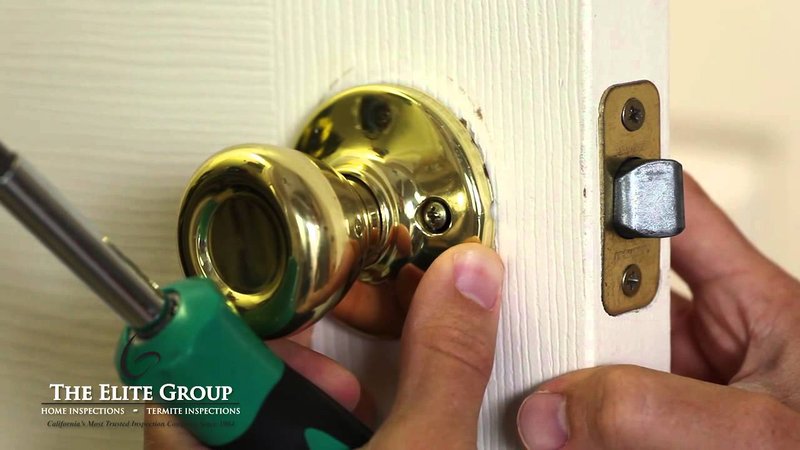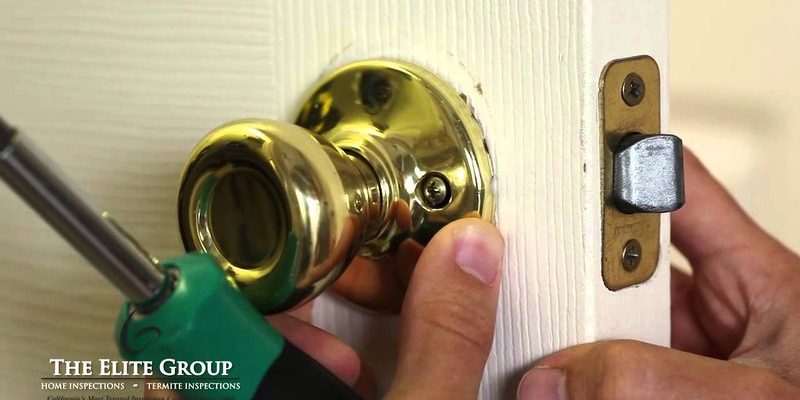
If your door latch isn’t responding properly, it might be time to dive into some diagnosis. You might be using a specific type of door latch, like a Schlage or Kwikset, each with its quirks. Getting to know these quirks can help you troubleshoot effectively. Ready to figure things out? Let’s break it down step by step.
Understanding the Role of the Spindle Hole
The spindle hole is where the spindle—a metal rod—fits snugly to connect the handle to the latch. It functions like a bridge, allowing the handle to actuate the latch. If the hole is too tight, worn, or damaged, the spindle won’t turn properly, leading to locked doors or a handle that just spins without engaging the latch.
You might be wondering: how does this affect me? Well, if you can’t open or close your door easily, it can be a nuisance, especially in a hurry. And it can also compromise your security if the latch isn’t fully engaging. So, let’s dig into common symptoms that indicate there might be trouble brewing within the spindle hole.
Common Symptoms of Spindle Hole Issues
When diagnosing your door latch, there are a few telltale signs to look out for:
- Handle Spins Freely: If your door handle spins without resistance, it often indicates a problem with the spindle’s grip on the latch mechanism.
- Difficulty Turning the Handle: If you find yourself wrestling with the door handle, it might feel stuck due to a misaligned spindle hole.
- Latch Won’t Engage: If the latch refuses to catch when you close the door, the problem might lie in how the spindle fits into the latch assembly.
Each of these symptoms gives you a clue about the underlying issue. Think of it as your door’s way of communicating with you.
Step 1: Inspecting the Spindle and Latch Assembly
To start troubleshooting, you need to take a close look at the door latch and the spindle. You’ll want to begin by removing the door handle. Here’s how to do that:
1. Locate the Screws: Most door handles will have screws visible. If not, you may need to look under any decorative covers.
2. Use the Right Tool: Grab a screwdriver that matches the screw type (usually Phillips or flathead).
3. Unscrew and Remove: Carefully unscrew and take off the handle. You should now see the spindle and latch assembly.
Once exposed, check for any visible signs of wear or damage to the spindle hole. Is it scratched, wider than the spindle, or missing any parts? These observations will help you identify what’s wrong.
Step 2: Testing the Fit
With the handles off, it’s time to test how the spindle fits into the spindle hole.
– Insert the Spindle: Slide the spindle into the hole. It should fit snugly. If there’s too much wiggle, you might need to consider replacing the latch assembly.
– Turn the Spindle: Rotate it back and forth. If it turns freely, you might have a misaligned latch or a worn spindle.
This is like a dance—you want them to be in sync. If they aren’t, it’s a sign there’s a misfit that needs addressing.
Step 3: Checking for Obstructions
Sometimes, the issue isn’t with the spindle or the latch but rather something obstructing the function. Here’s what to check:
1. Clear the Area: Look inside the latch pocket for any debris—dirt, dust, or even small screws that might have fallen in.
2. Lubricate if Necessary: A little lubricant can go a long way. Use a silicone-based spray for metal parts to ensure smooth movement.
3. Reinstall and Test: Put the handle back on, and see if that resolved the issue.
Obstructions are sneaky! They can seem minor but can cause major problems.
Step 4: Evaluating for Wear and Tear
If the spindle hole looks worn, it might be time to think about replacement options. Here’s how to evaluate:
– Check for Roundness: The spindle hole should be circular. If it’s starting to look oval or irregular, that’s a sign of wear.
– Look for Cracks: Any visible cracks can jeopardize the latch’s ability to function properly and may lead to a complete failure.
If the spindle hole is indeed worn out, replacing the latch may be your best option. You wouldn’t want to bandage a broken bone; sometimes, it’s best to start fresh.
Step 5: Final Steps – Repair or Replace
Now that you’ve evaluated everything, you face an important decision: repair or replace? Here’s how to decide:
– Repair: If the spindle hole issue is minor, it might be enough to lubricate or adjust.
– Replace: If the latch assembly is damaged or the hole is too worn, opt for a new latch. They’re not usually expensive and can enhance security and functionality.
Here’s a pro tip: when shopping for a new latch, consider universal models as they can fit multiple types of doors, saving you a potential headache down the line.
Diagnosing a problem with a door latch’s spindle hole can seem overwhelming at first, but it’s really about understanding what clues your door is giving you. Whether it’s a spinning handle, difficulty engaging the latch, or wear and tear, each symptom helps steer you in the right direction.
Taking the time to inspect and evaluate can save you frustration and money in the long run. Remember, a well-functioning door latch not only makes your home accessible but also secure. So, keep those doors and latches in check!
